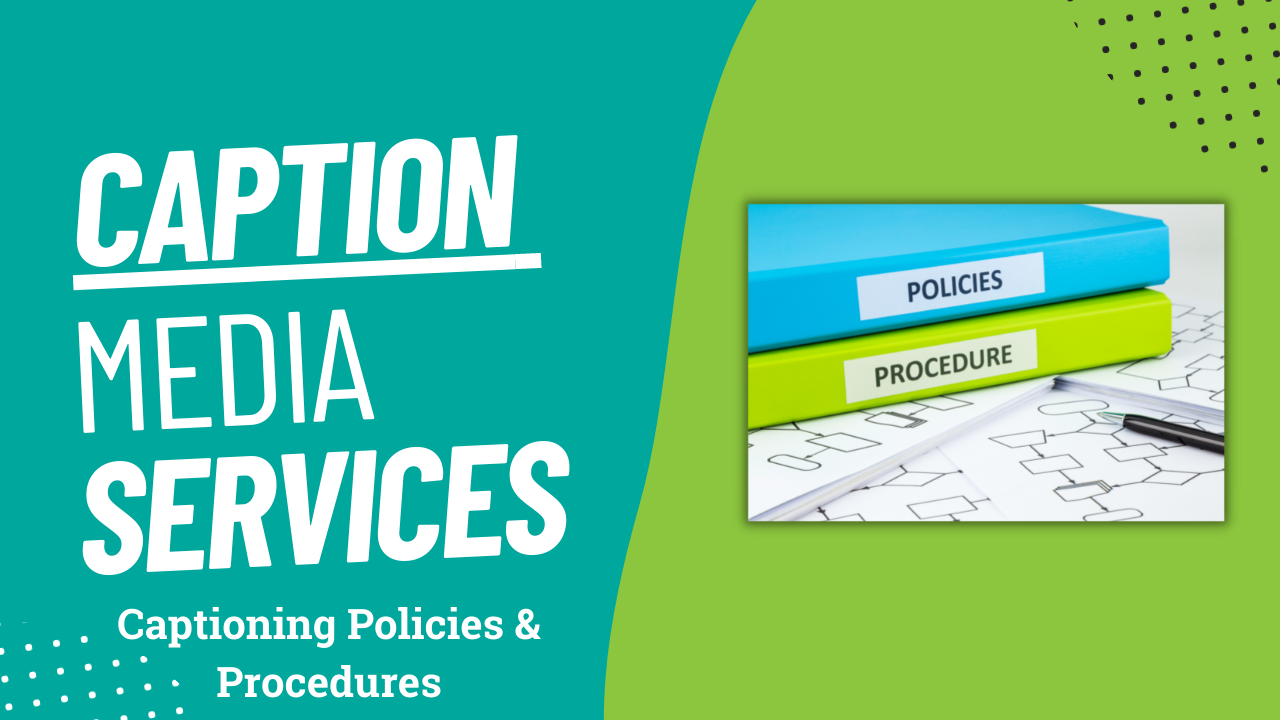Campus policies and procedures for captioned media is recommended as a proactive measure to support a consistent and streamlined process. Many institutions are moving toward ensuring that all media be captioned, whether or not a deaf individual has made a request. Such a policy would help reduce the need for last minute requests and maximize access for everyone. Policies that are supported and enforced by the college administration are most effective.
Interdepartmental collaboration via a captioning or accessibility committee should include key offices such as disability services, IT, library, curriculum & instruction, administration, and other relevant departments. A key goal of a committee would be to develop campus-wide policies and procedures. There are many elements to consider within a captioned media policy including, but not limited to:

Funding Structure: Consider the pros and cons to a centralized vs. decentralized funding approach for captioning media needs. A centralized structure would consist of a designated captioning fund that is shared by all departments for all campus captioned media needs. A decentralized structure holds individual departments accountable for the costs of captioning media.

Request Procedure: When an uncaptioned video needs to be captioned, institutions can lay out steps to make a request and how media will be prioritized. Determine whether the institution has the capacity to caption in-house or would need to outsource to a captioning vendor. Consider establishing a captioning center on campus with a designated coordinator to handle requests. Some universities use the disability services office as a central office for captioning requests and production. On the other hand, a university may require each department to use a specific contracted vendor when captioning media services are needed. Reasonable timelines for turnaround should also be included with the request procedure and widely advertised.

Media Priority: Some institutions include a priority structure such as academic materials for students requesting captioned media accommodations, media on the institution’s website visible to the public, and campus media used frequently (e.g. orientation and training videos). Other institutions may choose to require all media used on campus to be captioned.

Purchasing New Media and Textbooks: Guidelines can be outlined for departments to purchase accessible copies of media such as DVDs that are already captioned. Additionally, any required course materials, such as books with online interactive components, should be vetted to ensure that audio and visual content are accessible for all students before assigning them as course-required texts.


Additional Resources:






